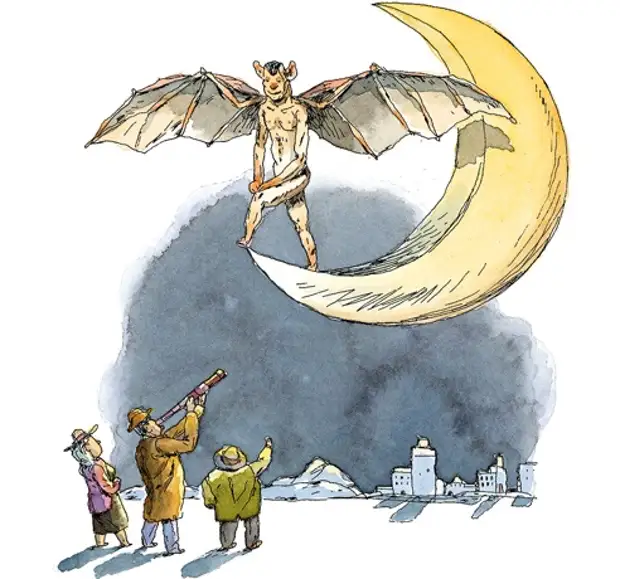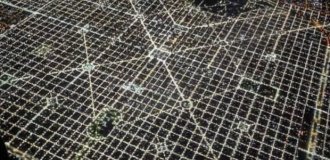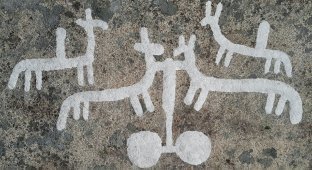The great lunar hoax of 1835 - who started the grandiose serial deception and why? (15 photos)
Everything is mixed in it - horses, people, fake custom-made newspaper articles, a famous astronomer, a bat-man, Edgar Allan Poe and revenge. And a little more Jules Verne. 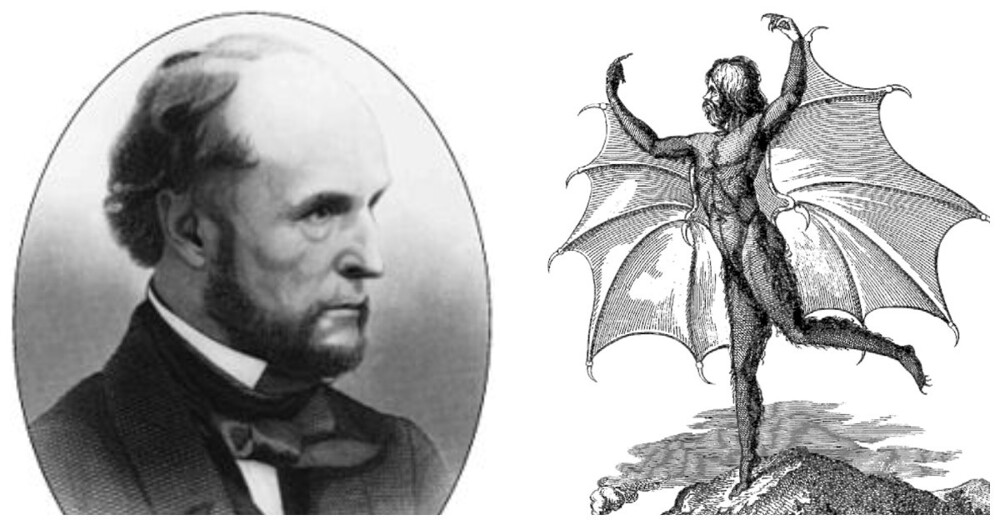
People fall for hoaxes - that's a fact. Whether it's mermaids, Bigfoot footprints or aliens - some are willing to believe in anything. It's doubly bad when the source of the hoax is an ordinary, everyday, trusted and reputable news source. This was the case in August 1835, when the New York Sun launched an elaborate serial hoax that convinced people that cities, rivers and bat-people could be found on the moon. It was called "The Great Moon Hoax." 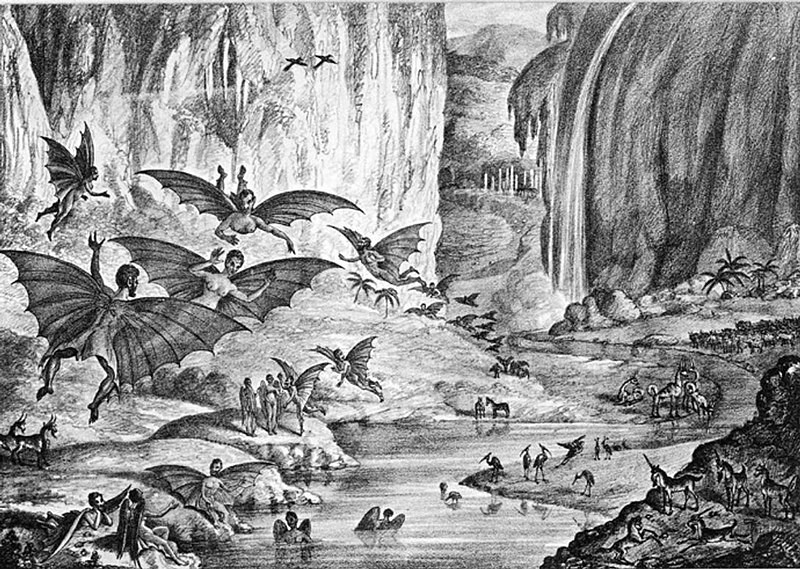
Marvelous lunar landscape
A good hoax must contain an element of truth. This is also a fact. And the first thing the original article did was try to give credibility to the information by linking it to Sir John Herschel. 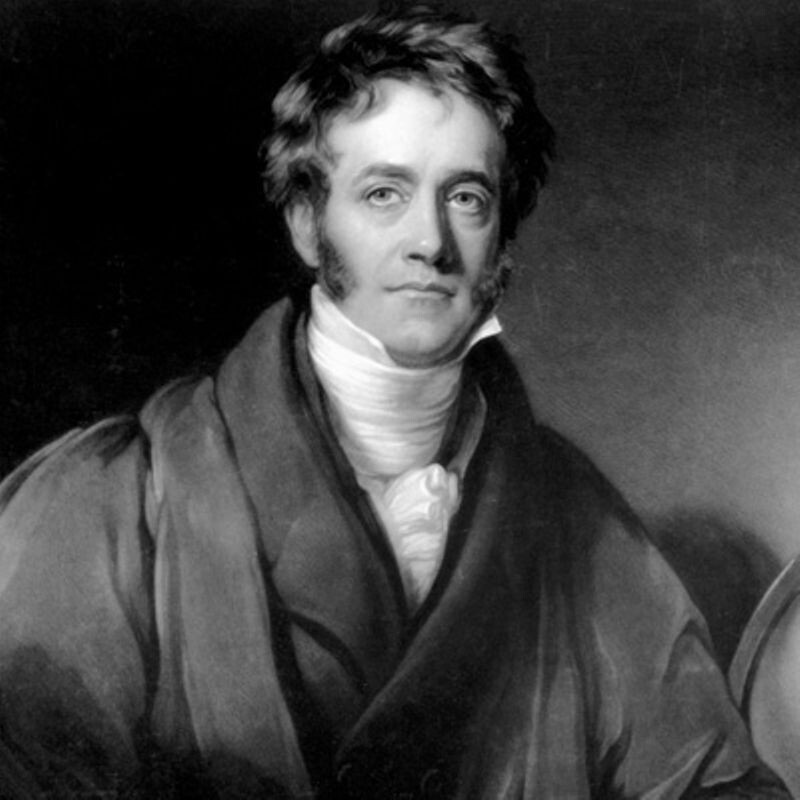
John Herschel
Herschel was one of those incredibly talented minds who worked in a variety of disciplines. In addition to being an astronomer, chemist and mathematician, he studied botany and photography. Science was a family hobby: his father discovered Uranus, and the younger Herschel named the four moons of this planet and the seven moons of Saturn.
He built his own telescopes, helped figure out the cause of astigmatism, made models of lunar craters, and even became one of the founders of the Royal Astronomical Society. Since Herschel was such a well-known specialist, any discoveries attributed to him had to be a priori true. In fact, Herschel had no idea that his name would be mercilessly exploited for a long time. 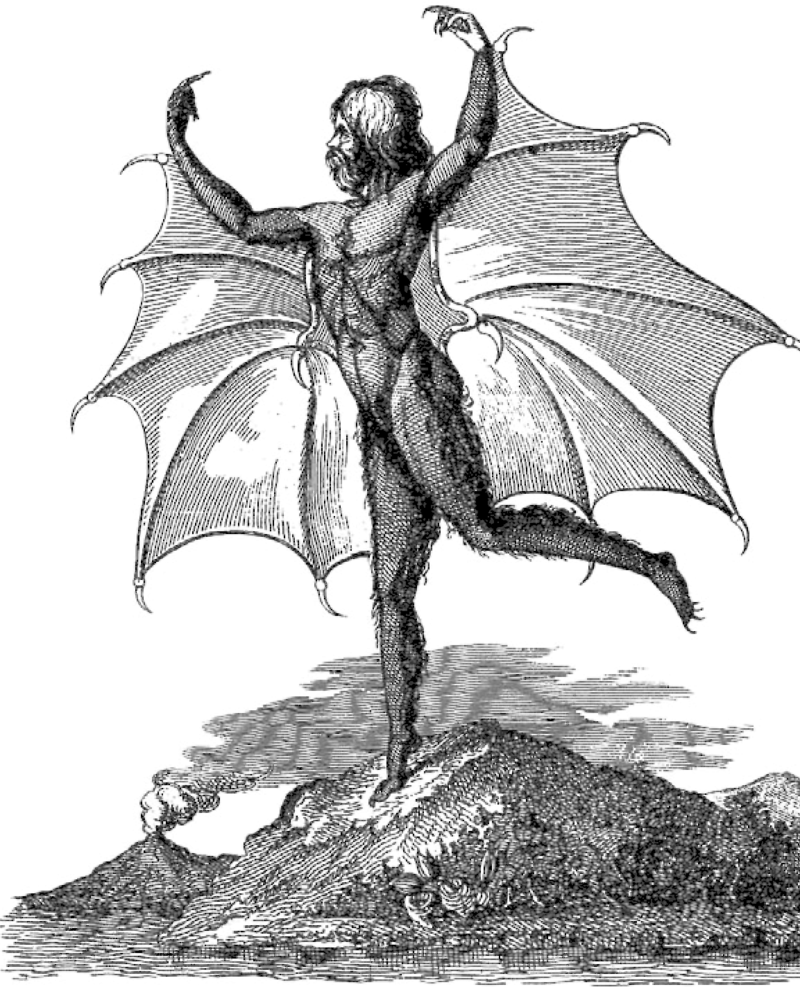
Lunar mouseman
The first hint that the story was coming came in the form of an announcement published on August 21st. On August 25, the first article appeared, it was published under the title “Great Astronomical Discoveries Recently Made by Sir John Herschel and Other Scientists at the Cape of Good Hope.” Using the Cape of Good Hope was another smart move, as the Royal Observatory was located there, giving the story even more credibility. The stories themselves were written under the name of Dr. Andrew Grant, who traveled with Herschel and documented his observations. Of course, Grant did not exist in nature. 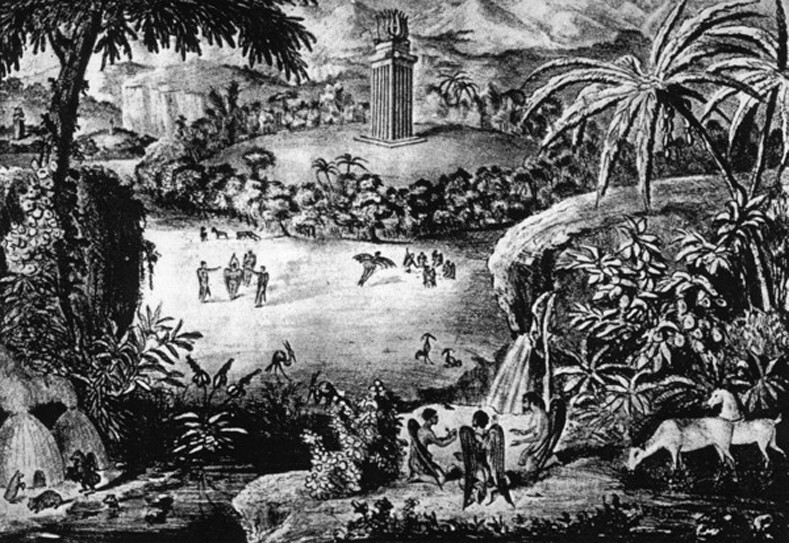
Rainbow Bay and Moon Temple. Lithograph from the Sun newspaper, August 25, 1835
Six articles described how the Moon is teeming with life, with some species identical to those on Earth and others very different. 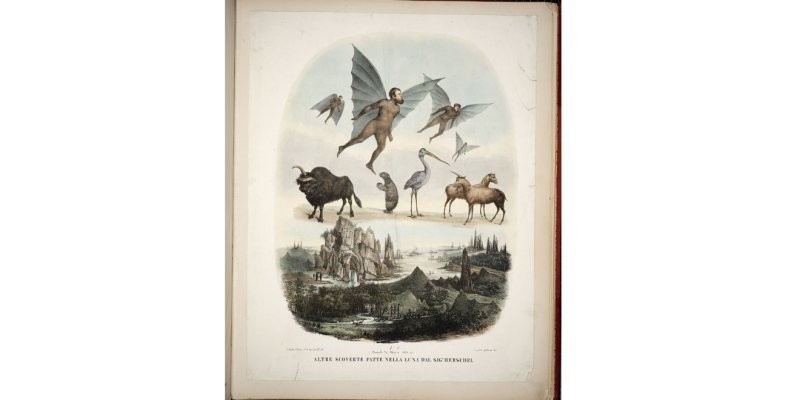
For every goat or bison, there were unicorns and tailless beavers that walked upright. The article described creatures with human appearance and wings similar to those of a bat. They were even given the scientific name Vespertilio-homo (Vespertilio is a genus of bats, also known as vespers or nocturnal bats; the word vesper itself means evening in Latin). 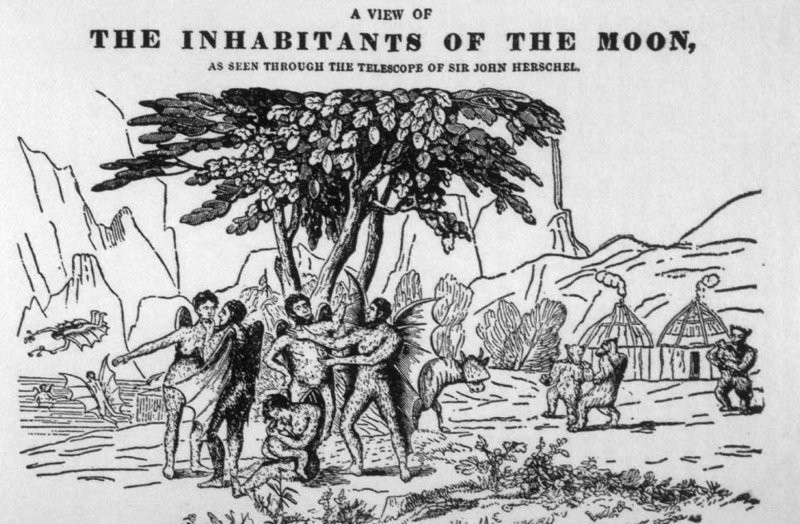
Mousemen and intelligent beavers
Presumably, the bat-people built analogues of temples - religious buildings - on the surface of the Moon. The ability to make such precise discoveries and observations was due to the new telescope built by Herschel. Of course, by a strange coincidence, it was destroyed after all the discoveries were made, because sunlight through a powerful lens set the observatory building on fire. Lithographs were created to illustrate the works, some of which show bat-men, unicorns, palm trees and more - all of which suggest a strange world right above us in the sky.
The immediate effect for the publication was an increase in circulation. Increased circulation allowed the newspaper to thrive in a tough market with articles about the Moon. 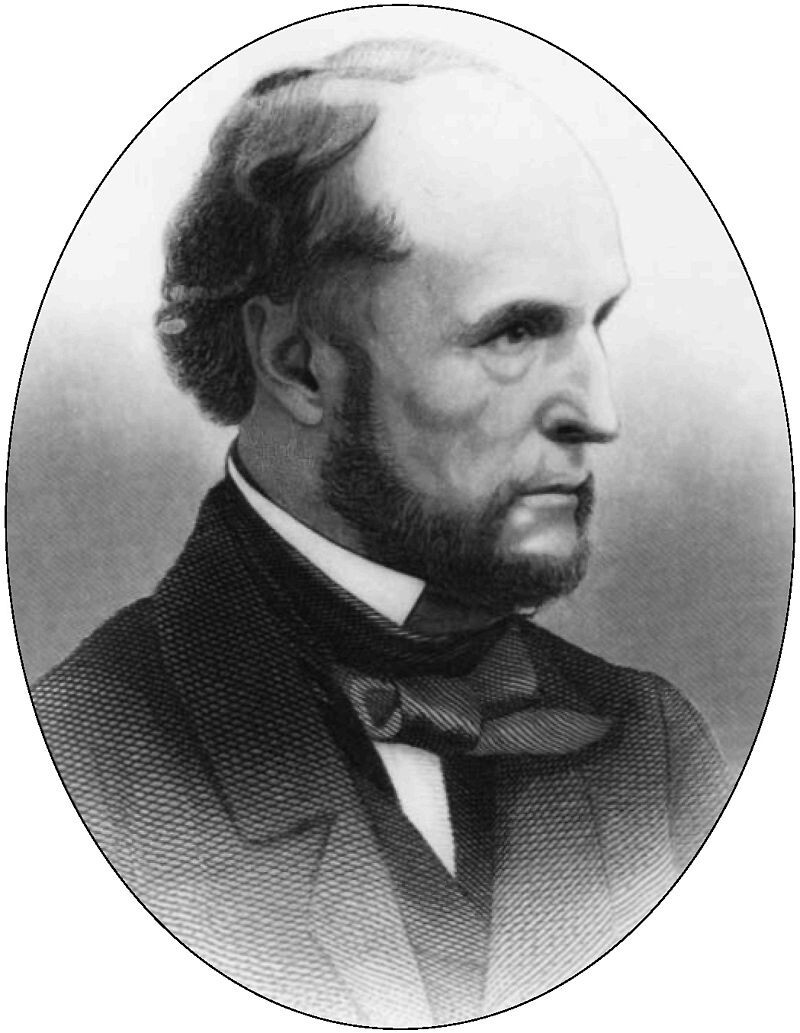
Richard Adams Locke
And, of course, it was a complete deception. Although there were other people involved, the genesis of the Great Moon Hoax traces back to one man, writer, journalist and editor Richard Adams Locke. Locke tried to achieve two goals. The first is to sell more newspapers. The second is to ridicule scientific and religious figures who made grandiose, unprovable claims about the solar system and presented them as facts. One example is “The Discovery of the Many Distinctive Traces of the Lunar Inhabitants, Especially of One of Their Colossal Buildings,” a paper presented in 1824 by astronomer Franz von Paula Gruithuisen. Although Gruithuisen correctly guessed that the lunar craters were caused by impacts, his guess about cities and jungles on the Moon was refuted by observers with more advanced telescopes. 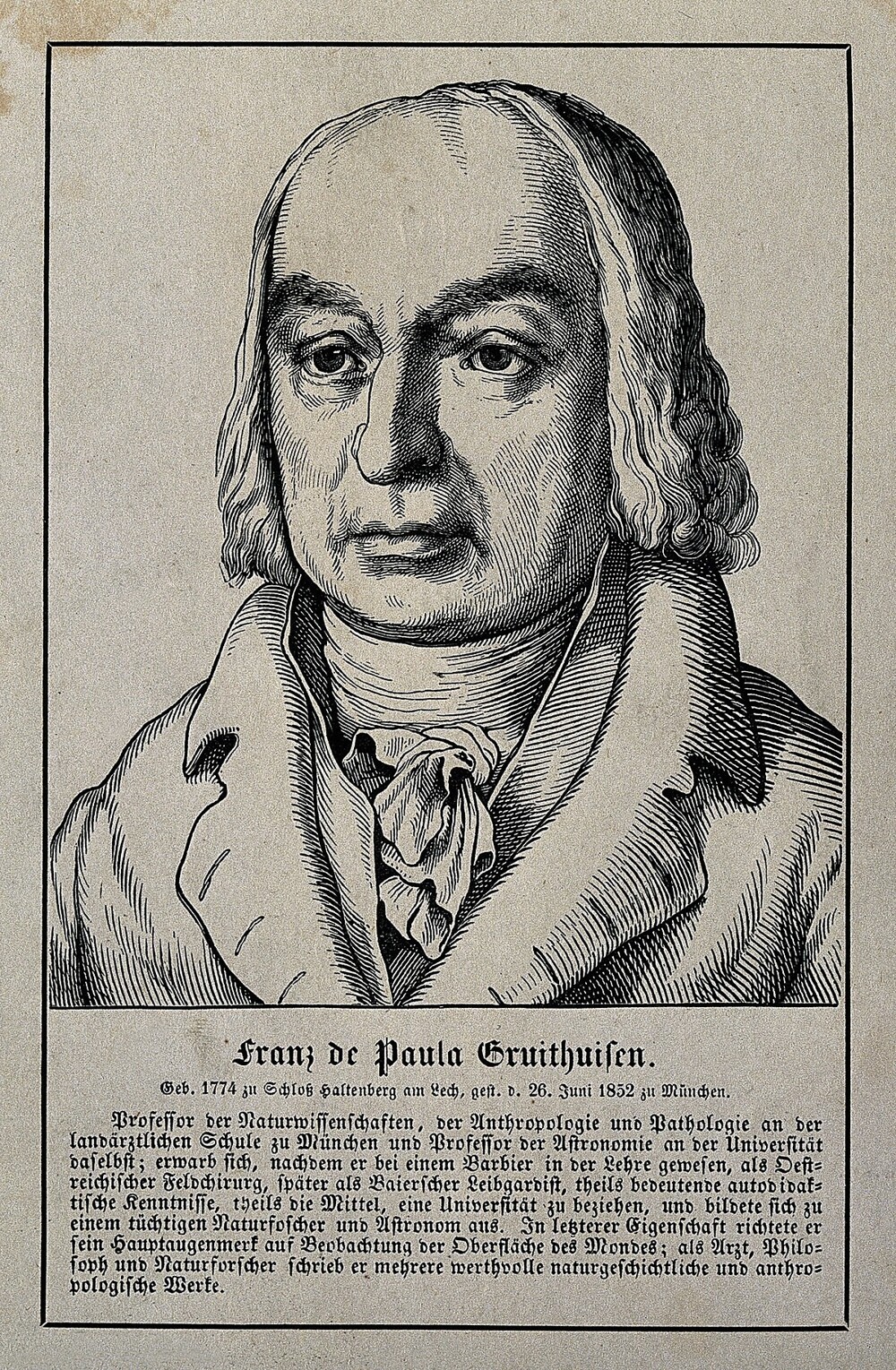
Franz von Gruithuisen
Another of Locke's targets was the Reverend Thomas Dick, author of The Christian Philosopher. Although Dick advocated the peaceful coexistence of science and religion and advocated the abolition of slavery, he also made incredible assumptions about the population of the solar system. He claimed to have mathematically determined that there were 21.9 trillion people living in the solar system, and that the population of the moon was over 4 billion; the basis for this was simply applying the population density of England in relation to the estimated sizes of other planets.
As information about the "Great Moon Hoax" spread, some people took it seriously, while others took it purely as a joke. 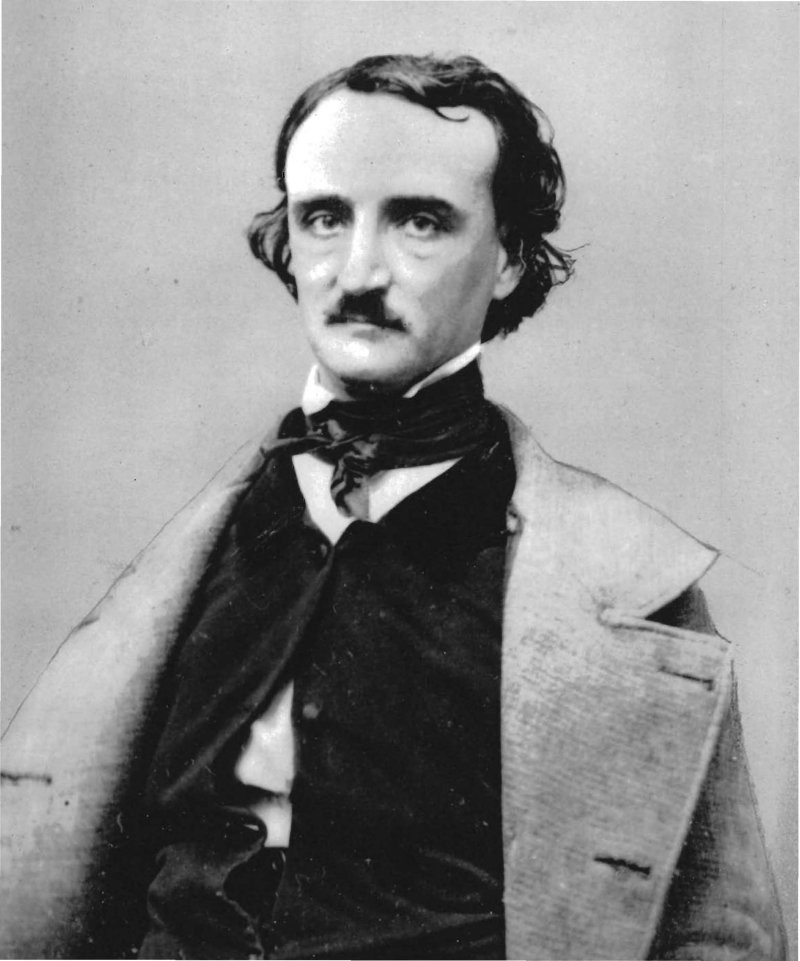
Edgar Allan Poe
When it turned out a few weeks later that this was a pure hoax, the newspaper never published a refutation. Sir Herschel initially found the whole story quite amusing, but later became tired of answering questions about it. But who was not at all amused by this story was Edgar Allan Poe. Poe argued that the moon hoax story was not just a fabrication, but a plagiarism. His accusations were based on the fact that he had written a very similar story that had been published two months earlier in the Southern Literary Messenger. It was called “The Unparalleled Adventure of Hans Pfaall,” and the editor of the work was... Richard Adams Locke. 
Poe's story was supposed to be a hoax itself. In addition, it was assumed that it would be published in several parts. The story centers on a man who goes to the moon in a hot air balloon equipped with a device that produces breathable air. However, Poe stopped working on the story. After using his ideas, he plotted revenge (he was Edgar Allen Poe, after all). In 1844, Poe published a story about balloonist Monck Mason crossing the Atlantic in three days in a balloon. The story became a sensation, but it fizzled out two days later when it was revealed that Poe's story was a hoax, and that he had done it to catch the Sun newspaper and his editor in a made-up story presented as the truth. 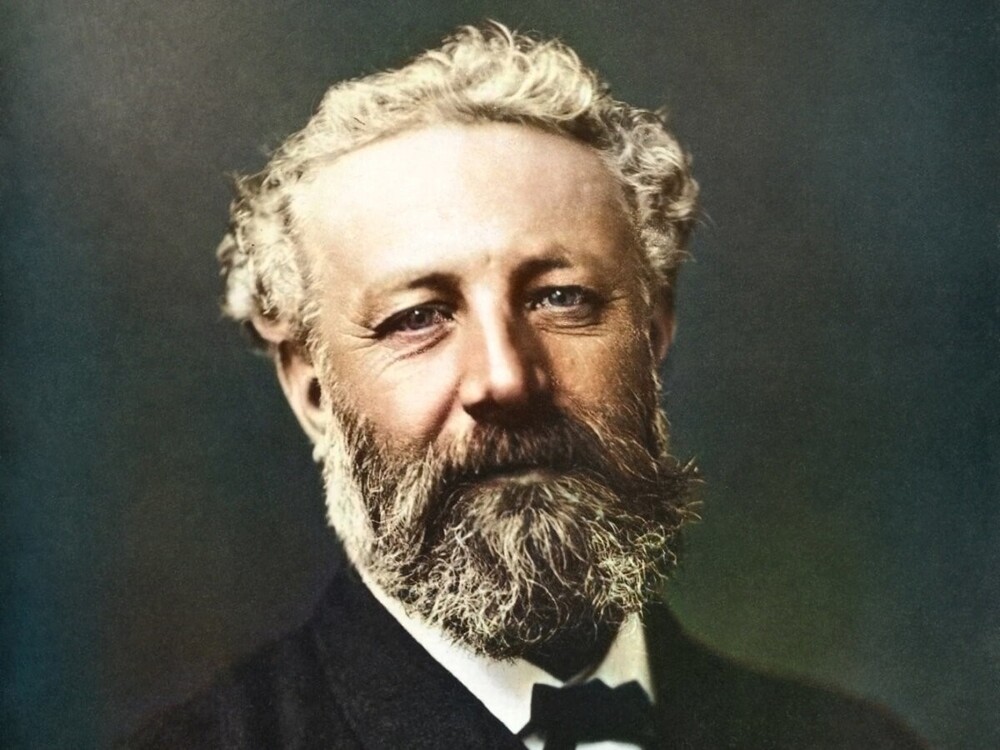
Jules Verne
One of the lasting consequences of this story of the moon and the balloon was that it twice inspired Jules Verne. The French writer, considered by many to be one of the most important figures in science fiction, references both the Great Moon Hoax and Poe's original story in his 1865 book From the Earth to the Moon. In addition, Poe's story about a hot air balloon aroused his interest in this method of travel, which he reflected in the novels Around the World in 80 Days and Five Weeks in a Balloon. 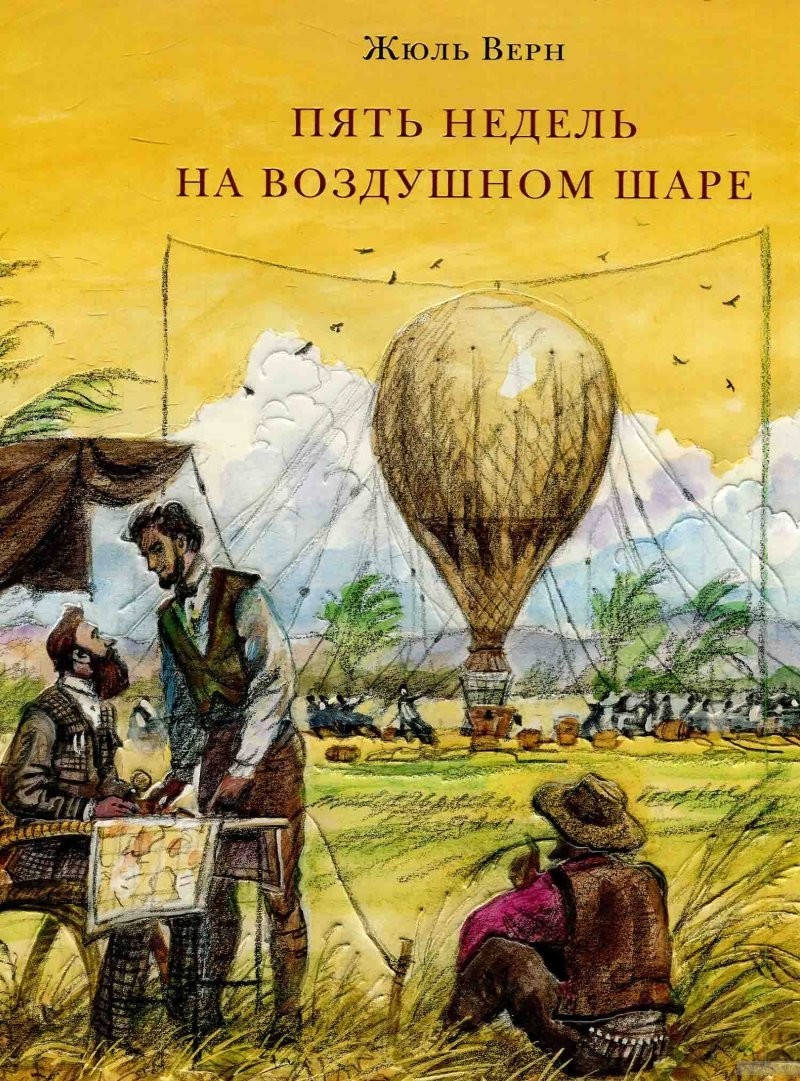
Remarkably, “The Great Moon Hoax” managed to become both believable and incredible. It seems odd that a publisher would jeopardize a newspaper's reputation to sell a circulation based on a completely fictitious story. But the gamble worked. 
It’s very strange that readers believed it at all. But history proves with many examples that people are ready to believe a lot, even ignoring a huge amount of significant evidence. Few newspaper "ducks" can boast of success comparable to the "moon duck" that was the result of the trick of Richard Adams Locke. 